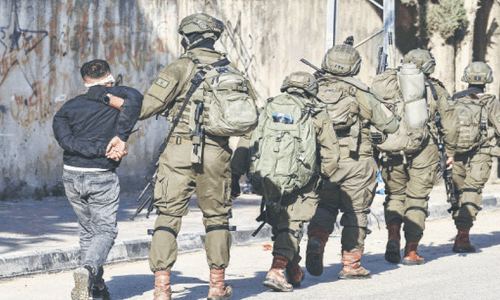Indian nuclear tests on May 18, 1974, changed the geopolitical situation of the subcontinent; however, Z.A. Bhutto undertook an official visit to the United States in February 1975 to muster Western support. On the way back he thought of ways to secure nuclear material and made stopovers at Rome and Bucharest.
In Washington, Bhutto had held meetings with President Ford and other officials; as a result the 10-year embargo on arms supply was lifted. This was, in fact, an attempt to soften Bhutto’s stand on the nuclear option. However, Bhutto appeared undeterred by this act and continued his efforts to acquire nuclear capability.
On February 8, 1975, Bhutto received a message from Pakistan about the murder of his close friend and a PPP stalwart Hayat Mohammad Khan Sherpao who had been killed in a bomb blast in Peshawar University. Bhutto cut his visit short and rushed to Pakistan. There was no valid evidence of who could be behind the murder.
Sherpao was Bhutto’s close friend from the very early days of the formation of PPP. He worked selflessly for the party’s promotion in the KP (the then NWFP) and remained its vice chairman from December 8, 1967, till his death. A left-wing intellectual, Sherpao did not work just for the party but also oversaw the covert operations in Afghanistan in 1975. When Bhutto took over in 1971 Sherpao was appointed governor of NWFP. He worked hard to implement the party’s programme which became a source of his growing popularity.
On February 8, 1975, as Sherpao was visiting the Peshawar University, his vehicle exploded by a timer device which killed him instantly. There was no immediate claim by any group but it was generally believed that it could be the work of Bhutto’s opponents whom Sherpao had punished on Bhutto’s insistence. Bhutto was in the US at that time, and from there he called his special assistant Rafi Raza and asked him to take interior minister Khan Qayyum to Peshawar, arrest Wali Khan and all National Awami Party (NAP) key people and think of banning the NAP.
Two days later, on February 10, the NAP was banned and all its assets were confiscated. Governor Aslam Khan Khattak was removed and the provincial government of Sardar Inayatullah Khan Gandapur dissolved. Governor’s rule was imposed and when no one from the banned party accepted the offer to head the NWFP government, Major-General Syed Ghawas was appointed as the governor. Later Major-General Nasrullah Khattak, who at that time was working as Pakistan’s ambassador in Tunisia, was appointed chief minister. A new coalition government of PPP and Qayyum League and independents was formed which proved to be the most ineffective government of the province.
Wali Khan was arrested from Lahore the same evening Sherpao was assassinated. He was preparing to leave for Peshawar to attend the funeral of Sherpao. He was first sent to Rawalpindi jail and then to Sahiwal and finally to Hyderabad where he and 80 of his associates had to face treason charges against him. The case was later known as Hyderabad Conspiracy Case. With Wali Khan were arrested Khan Amirzadah Khan, Syed Kaswar Gardezi, Ghaus Bakhsh Bizenjo, Nawab Khair Bakhsh Mari, Mir Gul Khan Nasir, Sardar Attaullah Khan Mengal, poet Habib Jalib and barrister Azizullah Shaikh. After the NAP was banned, to prove it an anti-state party, a number of colleges in NWFP, Punjab and Sindh were raided and the government claimed seizure of a huge cache of arms and ammunition.
The Third Amendment in the constitution gave wide legal powers to the state in defining ‘anti-state activities’. According to the amended law, “the government could brand any person or organisation as ‘enemy’ who was acting or attempting to act in a manner prejudicial to the integrity, security and defence of Pakistan or any part thereof or who commits or attempt to commit any act which amounts to an anti-national activity as defined in the federal law or is a member of any association which has for its object, or which indulges him, in any such anti-national activity.” Armed with these powers Bhutto undertook such steps that hampered civil liberties, for instance referring the cases of detainees after every three months instead of every month.
A reference against the NAP was presented to the Supreme Court. The court after hearing the two sides upheld the ban on the party on October 30, 1975.
Justice Aslam Riaz Hussain headed the tribunal followed by Justice Mushtaq Ali Qazi. Yahya Bakhtiar, the attorney-general, represented the government.
There are many theories regarding who killed Sherpao or might have engineered the tragic event. One theory suggests Sherpao’s growing popularity in the NWFP, while many theorists give importance to Sherpao’s intention of leaving the party a few months before his killing. Whosoever killed Sherpao, it goes without saying that Bhutto found it an appropriate reason to ban the NAP, releasing some of the pressure over him, at least for some time.


































